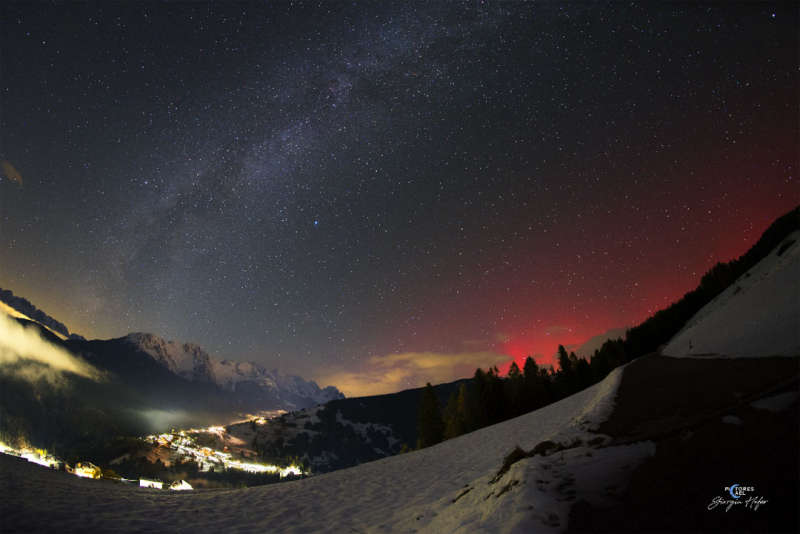Credit & Copyright: Giorgia Hofer
Explanation:
What was that red glow on the horizon last night?
Aurora.
Our
unusually active
Sun
produced a
surface explosion
a few days ago that sent out a burst of electrons, protons, and more massive charged
nuclei.
This coronal mass ejection (CME) triggered
auroras
here on Earth that are being reported
unusually far south in Earth's
northern hemisphere.
For example, this was the first time that
the astrophotographer
captured aurora from her home country of
Italy.
Additionally, many images from these auroras appear quite
red
in color.
In the featured image, the town of
Comelico Superiore
in the Italian Alps is visible in the foreground, with the
central band of our
Milky Way galaxy seen rising from the lower left.
What draws the eye the most, though, is the bright red
aurora on the far right.
The featured image is a composite with the foreground and
background images taken consecutively with the same camera and from the same location.
Aurora Album:
Selected images sent in to APOD
1999 2000 2001 2002 2003 2004 2005 2006 2007 2008 2009 2010 2011 2012 2013 2014 2015 2016 2017 2018 2019 2020 2021 2022 2023 2024 2025 |
Yanvar' Fevral' Mart Aprel' Mai Iyun' Iyul' Avgust Sentyabr' Oktyabr' Noyabr' Dekabr' |
NASA Web Site Statements, Warnings, and Disclaimers
NASA Official: Jay Norris. Specific rights apply.
A service of: LHEA at NASA / GSFC
& Michigan Tech. U.
|
Publikacii s klyuchevymi slovami:
aurora borealis - severnoe siyanie
Publikacii so slovami: aurora borealis - severnoe siyanie | |
Sm. takzhe:
Vse publikacii na tu zhe temu >> | |
